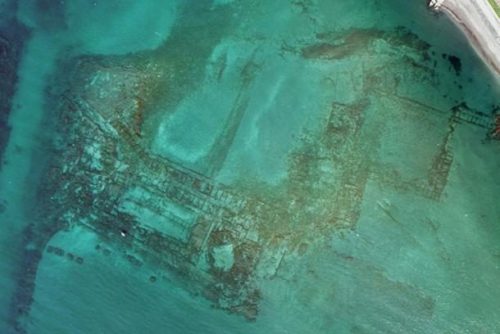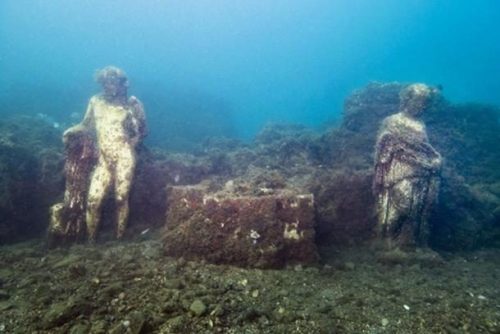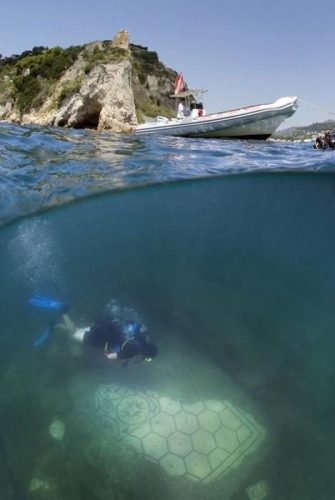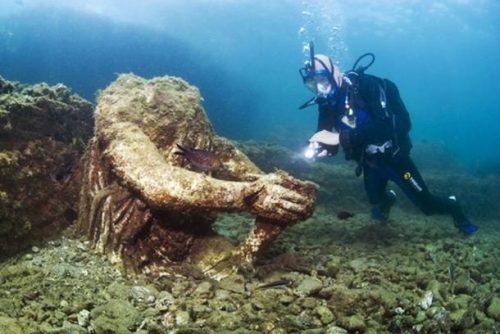
In the annals of archaeological discoveries, few have captured the world’s imagination like the recent revelation of Caesar’s sunken city. After lying hidden beneath the depths of the Mediterranean Sea for an astonishing 1,700 years, this once-thriving metropolis has resurfaced, leaving historians and enthusiasts alike in awe of its long-lost grandeur. In this article, we embark on an exploration of this remarkable find, shedding light on the historical significance, the underwater excavation process, and the implications for our understanding of ancient Rome.
- The Enigmatic City of Baiae
The sunken city in question is none other than Baiae, a resort town located on the western shore of Italy’s Gulf of Naples. Baiae was renowned for its luxurious lifestyle and was a favorite destination for the Roman elite during the height of the Roman Republic and the subsequent Empire. Prominent figures, including Julius Caesar, Augustus, Nero, and Cicero, frequented its shores for leisure and hedonistic pursuits.
- The Mystique of Baiae’s Demise
The fall of Baiae is a tale intertwined with the tumultuous history of the Roman Empire. As the western Roman Empire crumbled in the 5th century AD, Baiae fell into decline. The reasons for its submergence remain debated, with factors such as volcanic activity, coastal erosion, and the rising sea levels all contributing to its demise. Nevertheless, the once-thriving city gradually disappeared beneath the waves, its memory preserved only in ancient texts and historical accounts.

- The Remarkable Discovery
The rediscovery of Baiae began with a team of underwater archaeologists embarking on an ambitious mission to explore the submerged ruins. Armed with advanced technology, including underwater drones, sonar mapping, and diving equipment, they set out to unravel the secrets hidden beneath the Mediterranean’s depths. After years of painstaking work, their efforts finally paid off when they stumbled upon the submerged ruins of Baiae.
The divers were met with a sight that defied expectations. They uncovered well-preserved structures, statues, and artifacts that had miraculously withstood the ravages of time and the corrosive power of the sea. The astonishing find included opulent villas, elaborate mosaics, and even a statue of the sea goddess Venus, providing a vivid snapshot of life in ancient Baiae.
- Implications for History
The discovery of Baiae has far-reaching implications for our understanding of ancient Rome. It not only offers a tangible glimpse into the opulence and extravagance of the Roman elite but also sheds light on the architectural and engineering prowess of the time. The city’s layout, with its network of villas, thermal baths, and temples, underscores the sophistication of Roman urban planning.

Furthermore, the uncovering of Baiae serves as a testament to the resilience of human history. It reminds us that even after centuries submerged in obscurity, the past can resurface to challenge our preconceptions and inspire new avenues of exploration.
- Preservation and Future Research
Preserving the submerged ruins of Baiae is of paramount importance. Conservation efforts are underway to protect these priceless relics from further degradation. The underwater archaeological site is now closely monitored to prevent unauthorized access and ensure the site’s integrity for future generations of researchers and history enthusiasts.
Future research at Baiae promises to unlock even more mysteries. Archaeologists and historians are eager to delve deeper into the city’s past, unraveling the stories of the individuals who once walked its streets and the customs that defined their lives.

Conclusion
The rediscovery of Caesar’s sunken city, Baiae, is a testament to the enduring allure of history and the resilience of human curiosity. As underwater archaeologists continue to explore the submerged ruins, we can anticipate more revelations about this ancient metropolis and its role in shaping the world of ancient Rome. Baiae’s resurgence from the depths of the Mediterranean serves as a vivid reminder that the past is never truly lost, but merely waiting to be uncovered by intrepid explorers and dedicated researchers, ensuring that its stories are told for generations to come.






